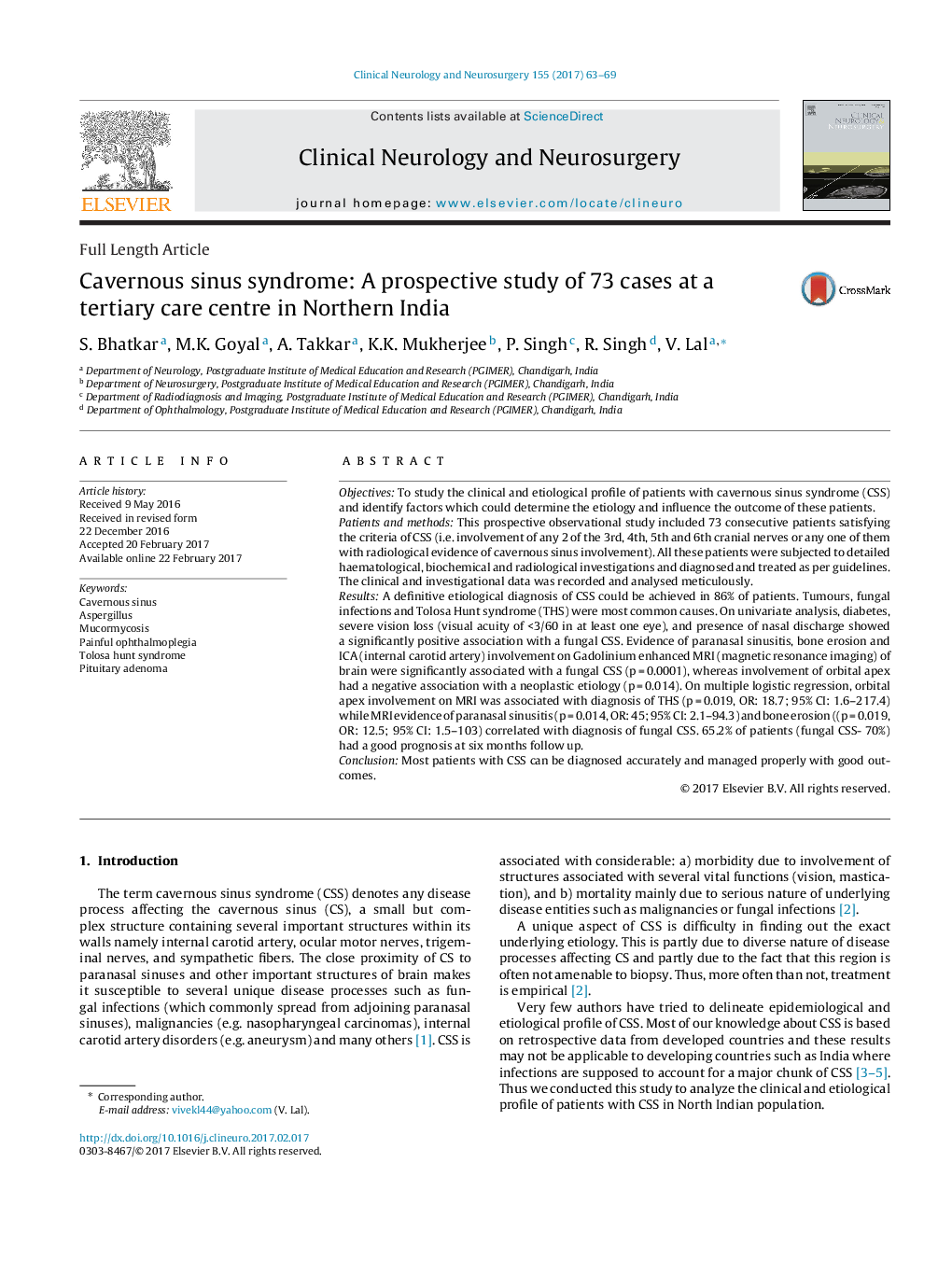| کد مقاله | کد نشریه | سال انتشار | مقاله انگلیسی | نسخه تمام متن |
|---|---|---|---|---|
| 5627191 | 1579667 | 2017 | 7 صفحه PDF | دانلود رایگان |
- Cavernous sinus syndrome (CSS) can be diagnosed accurately in 86.3% of patients.
- Most patients with CSS have good outcome.
- Orbital apex involvement on MRI is suggestive of Tolosa Hunt syndrome.
- Paranasal sinusitis) and bone erosion is suggestive of fungal CSS.
ObjectivesTo study the clinical and etiological profile of patients with cavernous sinus syndrome (CSS) and identify factors which could determine the etiology and influence the outcome of these patients.Patients and methodsThis prospective observational study included 73 consecutive patients satisfying the criteria of CSS (i.e. involvement of any 2 of the 3rd, 4th, 5th and 6th cranial nerves or any one of them with radiological evidence of cavernous sinus involvement). All these patients were subjected to detailed haematological, biochemical and radiological investigations and diagnosed and treated as per guidelines. The clinical and investigational data was recorded and analysed meticulously.ResultsA definitive etiological diagnosis of CSS could be achieved in 86% of patients. Tumours, fungal infections and Tolosa Hunt syndrome (THS) were most common causes. On univariate analysis, diabetes, severe vision loss (visual acuity of <3/60 in at least one eye), and presence of nasal discharge showed a significantly positive association with a fungal CSS. Evidence of paranasal sinusitis, bone erosion and ICA (internal carotid artery) involvement on Gadolinium enhanced MRI (magnetic resonance imaging) of brain were significantly associated with a fungal CSS (p = 0.0001), whereas involvement of orbital apex had a negative association with a neoplastic etiology (p = 0.014). On multiple logistic regression, orbital apex involvement on MRI was associated with diagnosis of THS (p = 0.019, OR: 18.7; 95% CI: 1.6-217.4) while MRI evidence of paranasal sinusitis (p = 0.014, OR: 45; 95% CI: 2.1-94.3) and bone erosion ((p = 0.019, OR: 12.5; 95% CI: 1.5-103) correlated with diagnosis of fungal CSS. 65.2% of patients (fungal CSS- 70%) had a good prognosis at six months follow up.ConclusionMost patients with CSS can be diagnosed accurately and managed properly with good outcomes.
Journal: Clinical Neurology and Neurosurgery - Volume 155, April 2017, Pages 63-69
